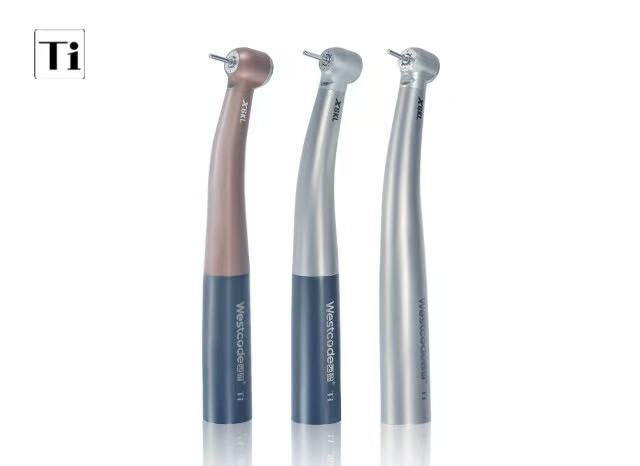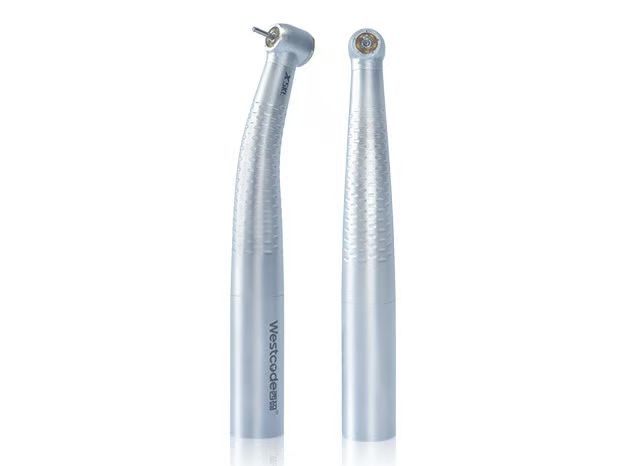16
2025
-
10
How to Choose an Efficient and Reliable Dental Turbine?
Dental Turbine Guide (High-Performance): Key specs, how to maintain, fix faults, repair tips. Helps clinics select ideal high-speed Dental Turbine.
Why a Dental Clinic Can't Do Without a Good Dental Turbine
Dental turbines are key tools. Dentists use them to drill teeth, prepare teeth and do restoration work. Its performance directly impacts operational precision, efficiency, patient comfort, and the clinic's operating costs.
People who run clinics or buy equipment choose dental turbines. They want ones that work well, last long and hardly break. This makes clinical work good and saves money.
Next, we will provide a comprehensive understanding of dental turbines from multiple perspectives, including technical considerations, brand selection, maintenance strategies, troubleshooting, and purchasing recommendations.
What is a dental turbine? Core Components and Operating Principles
Dental Turbine Components
A standard dental turbine typically consists of the following core components:
- Rotor/Bearing System: High-speed turbines work at hundreds of thousands of rpm. They mostly depend on precise bearings—often ceramic and hybrid types.
- Water Spray/Cooling System: Use an air/water cooling spray system. It stops the drill bit and tooth from overheating when they rub.
- Handpiece Structure/Body Materials: Common materials include stainless steel, titanium alloy, and ceramic coatings.
- Seals/Lubrication System: Maintain internal cleanliness, ensure proper lubrication, and prevent foreign matter from entering.
- Connections/Air Supply Channels: You can get it in 4-hole or 2-hole styles. It fits various air supply pipe standards too.
Brief Description of Operating Principle
When compressed air (typically approximately 0.2–0.3 MPa) enters the turbine, it drives the rotor to rotate at high speed. The rotor's inertia drives the drill bit at high speed, cutting the tooth.
Simultaneously, a water spray cooling system removes heat, ensuring that the tooth and drill bit do not overheat. In this process, bearings must take extremely high centrifugal forces and vibrations. This needs precise machining and quality materials.

Westcode's Positioning and Product Features in the Dental Turbine Market
- Westcode specializes in high- and low-speed handpieces, contra-angle, and turbine products, supporting OEM/ODM services.
- The company has many dental turbine models: X1LG, X2PLUS, X4, X4KLPRO, X45LGPRO, X5LG and X6KL. Each one fits different scenarios and performance needs—for example, for children, small heads, titanium alloy or LED.
- In the dental turbine market, the company is special. It has good materials, stable performance, OEM/ODM customization skills and a global export network.
How to Select and Evaluate a Dental Turbine
The following is a systematic purchasing guide to help you or your readers make informed decisions.
Key Performance Indicators
Parameter | Ideal Range / Standard | Significance / Reason |
Speed (No-Load RPM) | 300,000 – 450,000 rpm or higher | Higher speed improves cutting efficiency |
Torque / Load Capacity | ≥ 18–20 N·cm (depending on model) | Ensures the bur does not stall or lose speed under load |
Bearing Type | Ceramic bearings, hybrid bearings | Ceramic material offers high wear resistance and heat tolerance |
Spray / Cooling Design | Triple spray, ring spray, point spray | Proper spray design reduces heat damage and improves safety |
Interface Standard | 2-hole / 4-hole / standard international interface | Compatible with existing air tubing and equipment |
Noise / Vibration Level | ≤ 60–65 dB (depending on environment) | Affects patient comfort and operational stability |
Lifespan / Durability | ≥ 1–2 years of normal use | Reduces maintenance costs and replacement frequency |
Material and Structure Selection
Material
Titanium alloy bodies are usually lighter. They also resist corrosion and wear better. Stainless steel costs less, but it may be a little less strong.
Sealing and Protection Design
Excellent sealing prevents liquids and particles from entering the interior, extending life.
LED/Fiber Optic Design
Turbines with LED or fiber optic lights improve visibility. They make it easier to work carefully when drilling, placing dentures or inlaying.
Cooling Spray Structure
Multiple water sprays, circular sprays, and zoned cutting and spraying help reduce heat generation, ensuring efficient and safe cutting.
Brand/Manufacturer Evaluation Criteria
When choosing a dental turbine on the market, consider the following criteria:
- Certifications/Quality Standards: CE and ISO certifications are available.
- After-Sales/Repair Network: Whether repair centers cover the area and spare parts are readily available.
- Customer Case Studies/User Reputation: Has the company successfully exported the product to multiple countries? Has the product passed clinical validation?
- Customization Capabilities: Some clinics may require customization of the spray, nozzle, or housing color.
- Sample Testing/Performance Verification: Can the company provide samples for actual testing?
All Westcode products are CE and ISO certified, and we have exclusive distribution in multiple countries.
Price vs. Performance: How to Trade-Off
When buying a product, avoid quality problems from too low prices. And don’t blindly go for the best, most advanced features. We suggest focusing on value for money.
First, make sure the product meets basic performance needs. Next, evaluate if additional features like LED lighting, custom housings, or thicker spray structures are worth the price premium.
For example, two dental turbines might have similar key specs—like speed, bearings, torque and spray design. However, the manufacturer equips one of the two models with LED lighting. You should determine whether the extra convenience offered by the LED lighting merits the additional expense.

Dental Turbine Maintenance, Troubleshooting, and Repair Tips
Even if you purchase a high-performance dental turbine, improper maintenance and operation can shorten its lifespan. The following are common maintenance and troubleshooting recommendations.
Daily Maintenance Procedure
1. Cleaning the Spray Orifice and Filter: After each use, rinse the spray hole and inlet filter with special cleaner or clean water.
2. Lubrication/Oil: Follow the equipment instructions and use a dedicated oil to clean and lubricate bearings and seals.
3. Drying/Draining: After cleaning, thoroughly dry the unit to prevent residual moisture from causing rust or corrosion.
4. Autoclave Treatment: When sterilizing at high temperatures, check the equipment’s high-temperature limit—like if it can handle 135°C autoclaving.
Westcode's official website also provides instructions for sterilizing, lubricating, and maintaining pneumatic motors and handpieces.
Common Faults and Troubleshooting Suggestions
Fault / Symptom | Possible Cause | Inspection / Solution |
Unstable speed / Stopping | Bearing wear, insufficient lubrication | Check if bearings are damaged, re-lubricate or replace |
No spray / Uneven spray | Clogged spray holes, blocked filter | Clean the spray system, check if tubing is clear |
Increased noise / Vibration | Bearing misalignment, rotor imbalance | Disassemble and check bearings and rotor balance |
Overheating / Tooth burn | Insufficient cooling water, poor spray design | Check spray system, cooling channels, and air/water pressure |
Filter / Seal leakage | Worn seals, loose connections | Replace seals and tighten connections |
During repairs, we recommend using genuine or high-quality replacement parts. For Westcode turbine products, ensure you have access to parts support or repair instructions.
Summary
- Dental turbines are critical equipment in dental practice. Their performance, lifespan, and stability directly impact both treatment efficiency and cost.
- Westcode is strong in the turbine and high-speed handpiece field. It has many models, offers OEM/ODM support, and has certifications.
- When purchasing, focus on core performance indicators, material structure, after-sales service, and value for money.
- Good maintenance and troubleshooting strategies are key to ensuring the long-term and stable operation of a dental turbine.
FAQ
Q1: What is a dental turbine?
A: A high-speed dental turbine uses compressed air to drive a drill bit for high-speed rotation, used for tooth removal operations.
Q2: What is the difference between a dental turbine and a low-speed handpiece?
A: Dental turbines have very high speeds but low torque. Low-speed handpieces have lower speeds and higher torque, making them suitable for operations like polishing.
Q3: How can I ensure effective cooling of the dental turbine?
A: Regularly clean the spray holes and pipes to ensure the water spray/atomization system is unobstructed.
Q4: Can dental turbines be autoclaved?
A: It depends on the model. Manufacturers design some turbines to withstand high-temperature steam sterilization. Before use, confirm whether they are heat-resistant.
Previous page
Previous page



